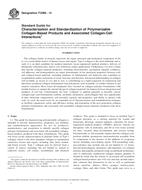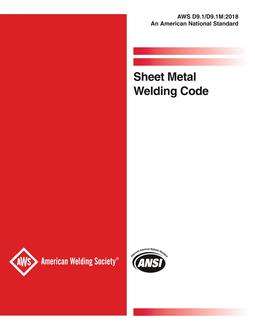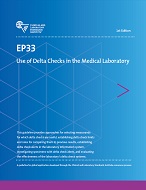
ASTM F3089
Original price was: $54.00.$32.00Current price is: $32.00.
Standard Guide for Characterization and Standardization of Polymerizable Collagen-Based Products and Associated Collagen-Cell Interactions
| Published by | Publication Date | Number of Pages |
| ASTM | 05/01/2014 | 17 |
ASTM F3089 – Standard Guide for Characterization and Standardization of Polymerizable Collagen-Based Products and Associated Collagen-Cell Interactions
1.1 This guide for characterizing polymerizable collagens is intended to provide characteristics, properties, test methods, and standardization approaches for use by producers, manufacturers, and researchers to identify specific collagen polymer formulations and associated self-assembled collagen-based products produced with these formulations. This guide will focus on the characterization of polymer forms of Type I collagen, which is the most abundant collagen in mammalian connective tissues and organs, including skin, bone, tendon, and blood vessels. Type I collagen may be derived from a variety of sources including, but not limited to, animal or cadaveric tissues, cell culture, recombinant, and chemical synthesis. This guide is intended to focus on purified Type I collagen polymers as a starting material for wound and hemostatic dressings, surgical implants, substrates for tissue-engineered medical products (TEMPs), delivery vehicles for therapeutic cells or molecules, and 3D in-vitro tissue systems for basic research, drug development, and toxicity testing. Polymerizable or self-assembly implies that the collagen composition exhibits spontaneous macromolecular assembly from its components in the absence of the addition of exogenous factors including cross-linking agents. Self-assembling collagen polymers may include, but are not limited to: (1) tissue-derived atelocollagens, monomers, and oligomers; (2) collagen proteins and peptides produced using recombinant technology; and (3) chemically synthesized collagen mimetic peptides. It should be noted that the format of associated self-assembled collagen-based products also will vary and may include injectable solutions that polymerize in situ as well as preformed sheets, particles, spheres, fibers, sponges, matrices/gels, coatings, films, and other forms. This guide may serve as a template for characterization and standardization of other fibrillar collagen types that demonstrate polymerization or self-assembly.
Product Details
- Published:
- 05/01/2014
- Number of Pages:
- 17
- File Size:
- 1 file , 210 KB
- Note:
- This product is unavailable in Russia, Ukraine, Belarus



